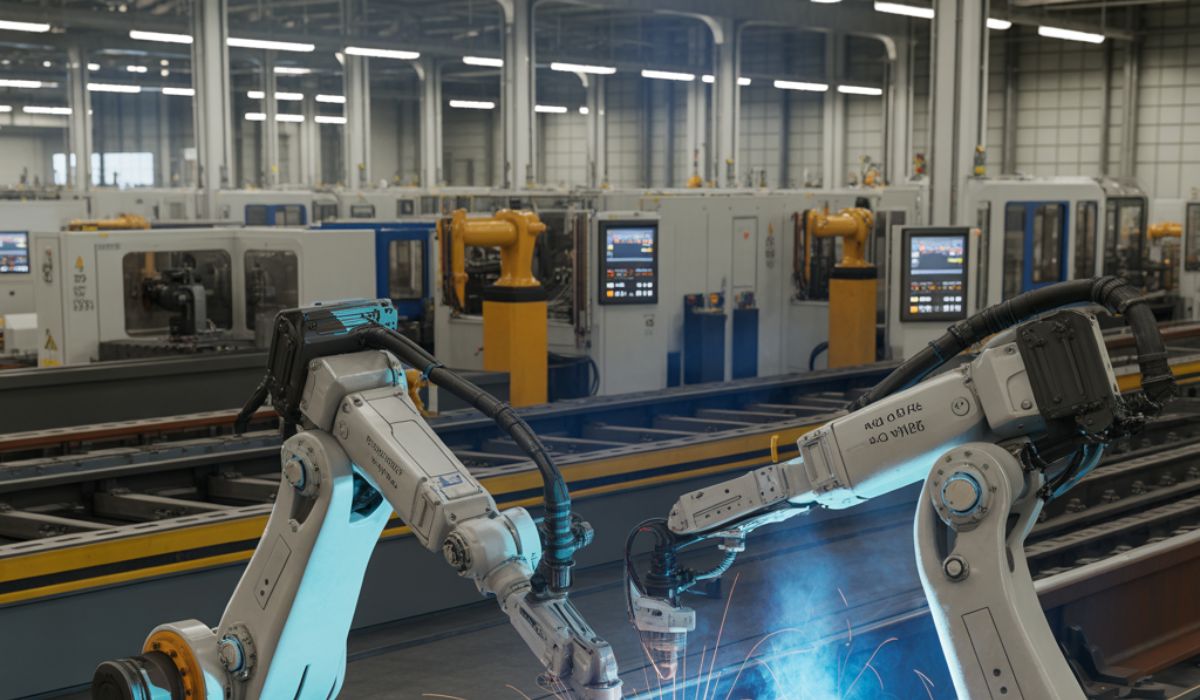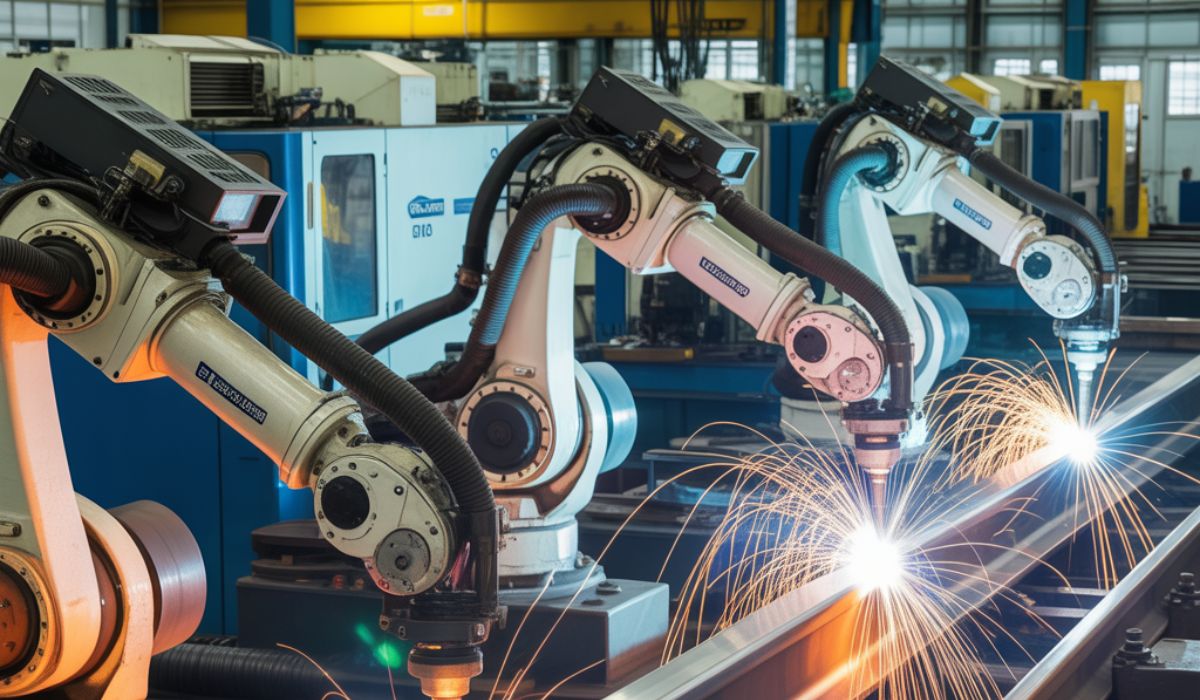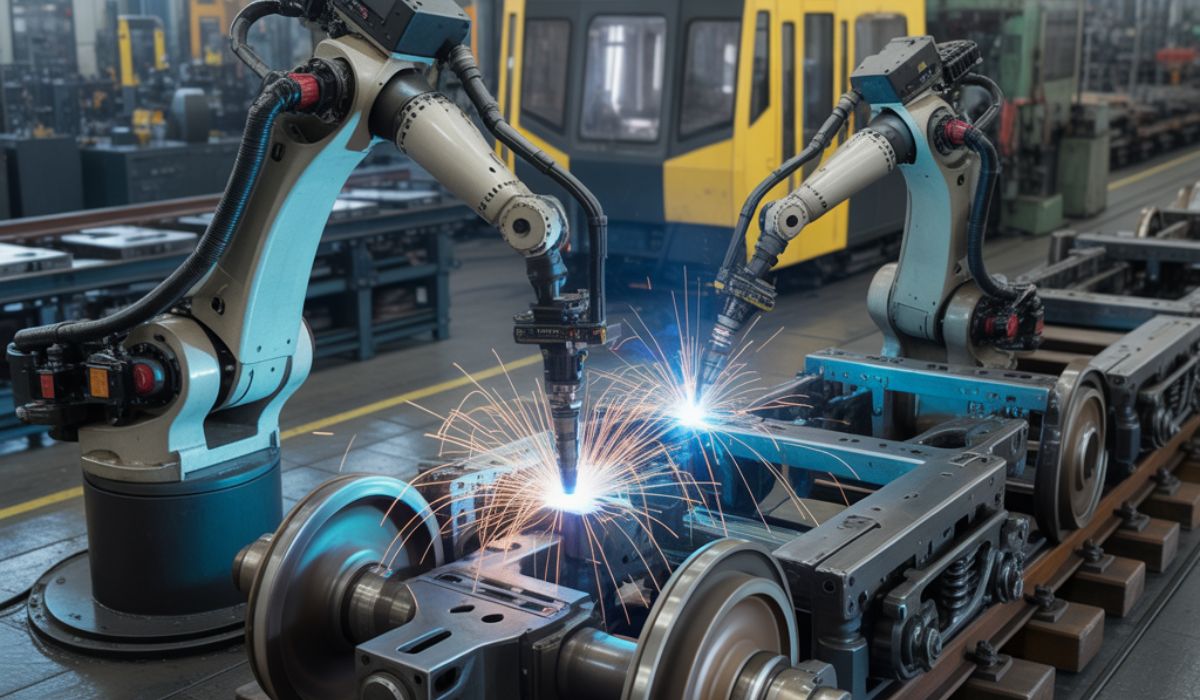Robotic Welding for Railway Industry: Revolutionizing Train Manufacturing Worldwide
The railway industry worldwide is undergoing a major transformation. With the demand for faster trains, metro systems, and high-speed rail networks increasing, manufacturers need precision, efficiency, and safety more than ever. One of the most impactful technologies driving this change is robotic welding. From assembling bogies to producing train coach bodies, robotic welding is redefining how railway manufacturing operates globally.
In this blog, we explore how robotic welding is transforming the railway sector, its applications, benefits, challenges, and what the future holds for this advanced automation technology.
Why Welding Automation is Crucial in Railway Manufacturing
Railway manufacturing involves large, complex metal components. Traditional manual welding has limitations:
-
Inconsistent weld quality due to human error
-
Slower production rates, especially for large-scale projects
-
Safety hazards from high heat, sparks, and welding fumes
Robotic welding addresses these challenges by automating critical welding tasks, ensuring consistent quality, faster throughput, and safer working conditions. As the global railway industry moves toward modernization, automation becomes essential for maintaining competitiveness and meeting stringent safety standards.
Understanding Robotic Welding in the Railway Industry
Robotic welding uses programmable machines to perform welding tasks with high accuracy and repeatability. In railway manufacturing, robotic systems are applied to:
-
Coach body fabrication – side panels, roofs, and frames
-
Bogie manufacturing – joining heavy underframe components
-
Couplers and junctions – critical welds that require high strength and durability
Common robotic welding methods include MIG/MAG welding, laser welding, and hybrid processes, depending on the materials and component design. These systems can operate continuously, reducing errors, material waste, and production delays.
Key Benefits of Robotic Welding in Railway Manufacturing
-
Precision and Consistency
Robots follow programmed paths, ensuring each weld meets strict quality requirements. This is critical for structural integrity and safety in high-speed trains. -
Enhanced Worker Safety
Robotic welding reduces human exposure to heat, sparks, and fumes, decreasing workplace accidents and occupational health risks. -
Increased Production Efficiency
Robots can operate 24×7 without fatigue, allowing manufacturers to meet tight deadlines and high-volume production needs. -
Reduced Material Waste
Accurate weld placement minimizes rework and scrap, lowering production costs and improving sustainability. -
Compliance with International Standards
Automated welding systems help meet ISO and other global quality standards, ensuring high-quality manufacturing for rail projects around the world.
Applications of Robotic Welding in Railway Manufacturing
Robotic welding is widely used across the railway sector for various components:
-
Train Coach Production: Robots handle welding of side panels, roofs, and internal structures with high precision.
-
Bogie Fabrication: Heavy-duty robots manage large and complex underframe assemblies.
-
Metro Train Manufacturing: Automated welding systems support growing urban rail networks and rapid production cycles.
-
High-Speed Trains: Weld quality is critical; robotic systems ensure flawless joints for safety and durability.
Automation allows manufacturers worldwide to produce trains more efficiently while maintaining consistent quality and meeting safety requirements.
Challenges in Railway Welding and How Robotics Addresses Them
-
Handling Large Components
Robotic systems can easily manage large panels and assemblies that are difficult to maneuver manually. -
Controlling Heat Distortion
Large metal structures can warp during welding. Robots follow optimized paths and apply controlled heat to maintain dimensional accuracy. -
Material Compatibility
Modern railway vehicles use multiple materials like steel, aluminum, and alloys. Robotic systems can switch welding parameters for different metals seamlessly. -
Maintaining Accuracy in Safety-Critical Areas
High-speed trains and metro coaches require precise welding tolerances. Robots deliver consistent results every time.
The Future of Robotic Welding in Railway Manufacturing
Robotic welding technology is evolving rapidly. The future includes:
-
AI-Powered Welding: Vision systems detect and correct weld defects in real-time.
-
Digital Twin Simulation: Entire welding processes can be simulated before production to reduce errors.
-
Predictive Maintenance: Robots equipped with sensors can predict maintenance needs, reducing downtime.
-
Fully Automated Production Lines: Integration with assembly and inspection robots for end-to-end automated manufacturing.
Automation is expected to become a standard across all major railway OEMs globally, driving efficiency, safety, and quality improvements.
FAQs about Robotic Welding in Railway Manufacturing
Q1: Is robotic welding suitable for railway production?
A1: Yes. Robotic welding ensures precise, consistent welds, enhances safety, and improves production efficiency.
Q2: What types of robots are used in railway welding?
A2: MIG/MAG robots, laser welding robots, and hybrid robots are commonly used in coach bodies, bogies, and safety-critical components.
Q3: How does robotic welding improve workplace safety?
A3: By reducing human exposure to sparks, heat, and fumes, robotic welding significantly lowers the risk of accidents.
Q4: Are robotic welding systems expensive?
A4: Initial investment can be high, but the long-term benefits — reduced waste, faster production, and consistent quality — make it cost-effective.
Conclusion
Robotic welding is transforming the railway industry worldwide. From metro systems to high-speed trains, automation ensures precision, safety, and efficiency in train manufacturing.
By adopting advanced robotic welding systems, railway manufacturers can achieve consistent quality, higher throughput, and meet strict international safety standards. The future of railway production is automation-driven, and robotic welding is at the heart of this technological revolution.



